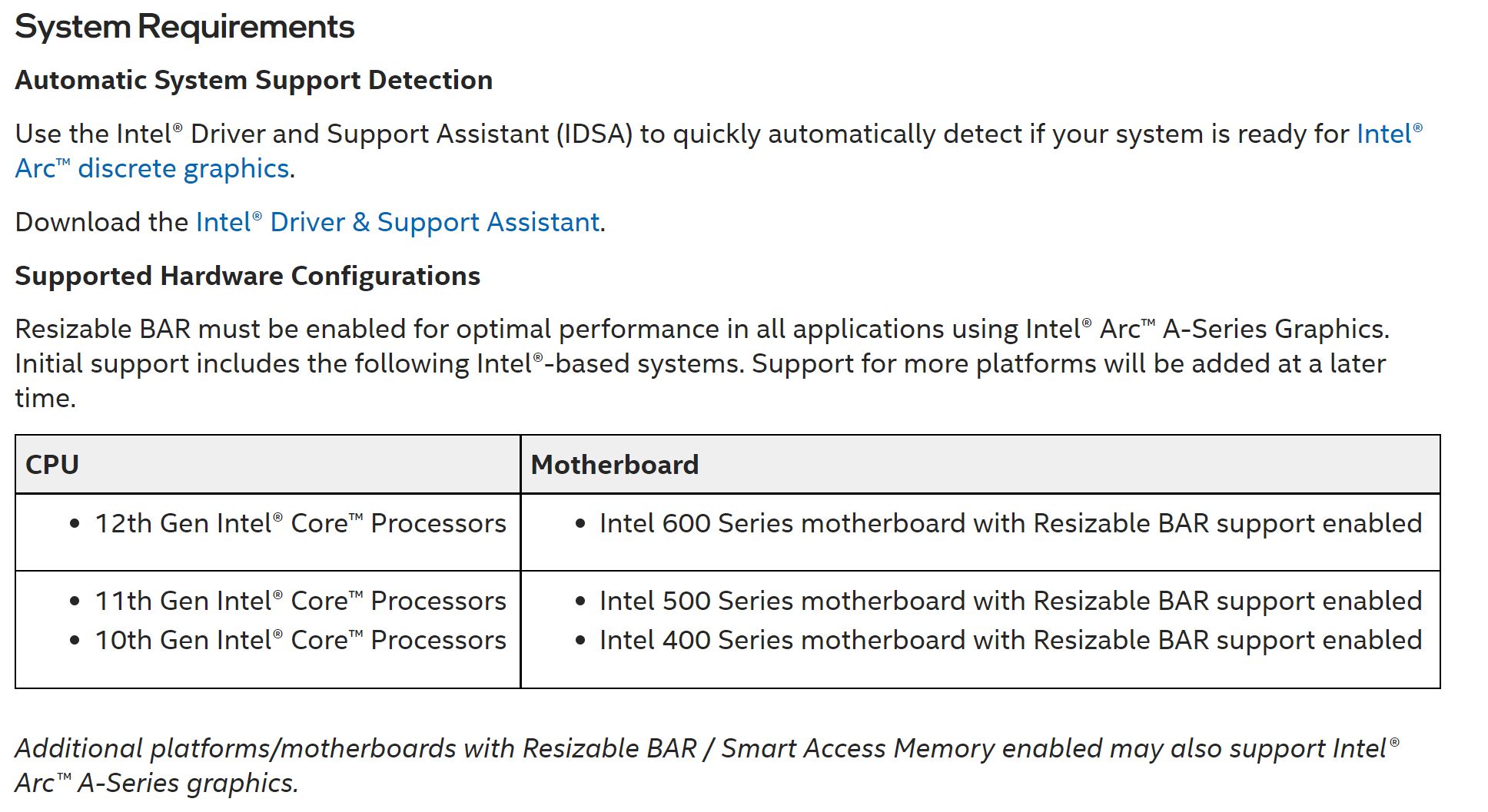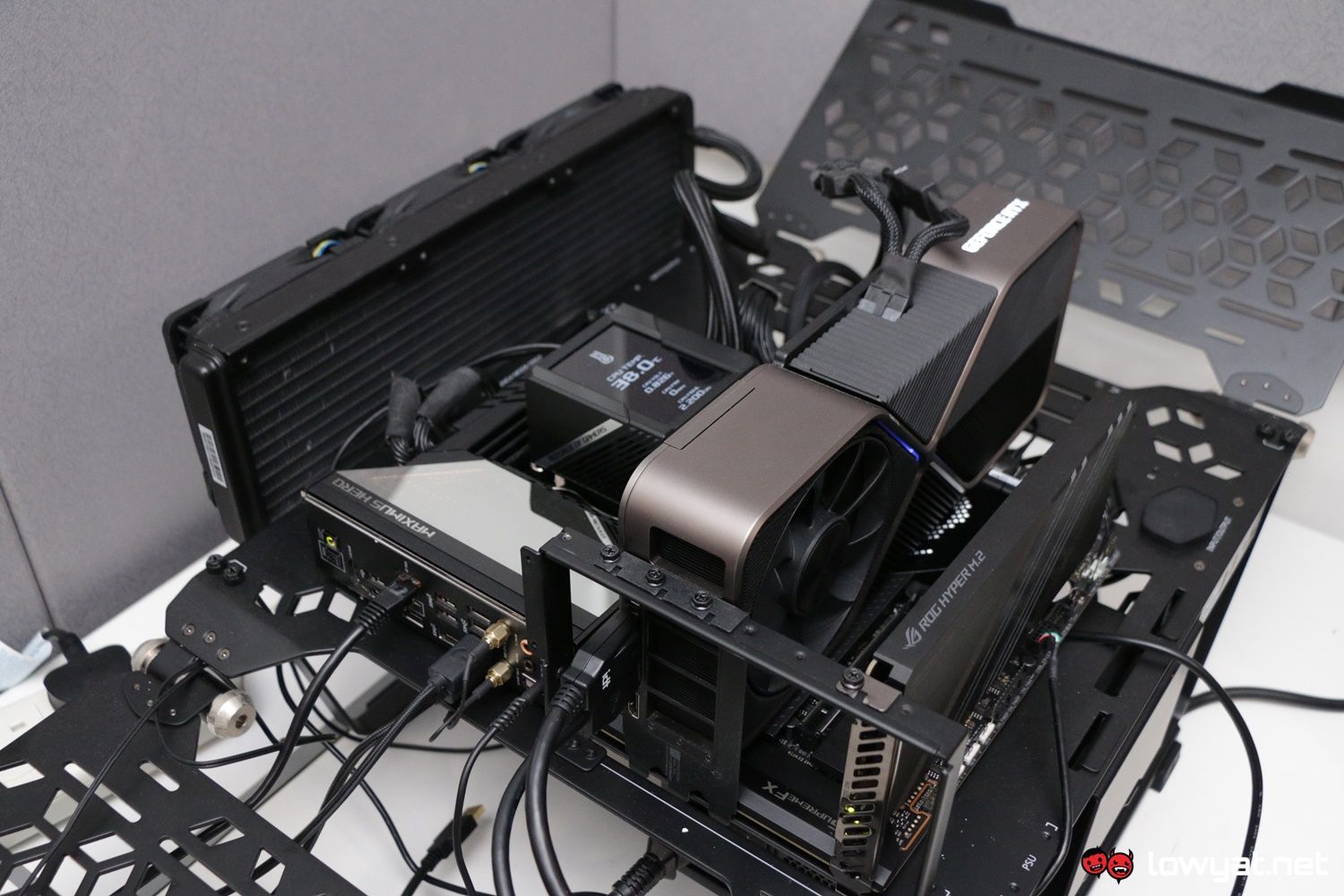For the uninitiated, Resizable BAR is basically a feature built into the PCIe interface, that makes the entirety of a GPU accessible to the CPU, all at once. In other words, it enables both components to communicate and allocate power between each other, depending on which one needs more. If the Resizable BAR technology sounds familiar, it’s probably because AMD introduced its own version of the technology in the form of Smart Access Memory (SAM), back in 2020. The difference between SAM and Resizable BAR is that the former only works between AMD’s Ryzen CPUs and Radeon GPUs. Getting back to Intel’s guide, its says that Resizable BAR will only be supported by three Intel CPU series: 12th Gen Alder Lake and their 600-series motherboards, 11th Gen Rocket Lake and their 500 series motherboards, and 10th Gen Comet Lake with their 400 series chipsets. Adding on to the requirement, the guide also requires that the motherboards support PCIe 3.0 as the other bare minimum. On a related note, if Intel’s guide is anything to go by, this would mean that, moving forward with all future CPU generations, Resizable BAR is clearly expected to be a staple, especially if they want all of Intel’s ARC desktop GPUs to run at peak, never mind optimal, performance.
The only problem is that, at this publication, the only desktop Intel ARC GPU that has been launched is the entry-level A380, and even then, it is only within the borders of China. But again, that’s just the entry-level ARC A-Series GPU, and while Intel says that its more powerful and higher-end desktop graphics will be rolling later in the summer. In other words, we won’t really be getting to see just how much of a boon Resizable BAR is going to be for ARC. (Source: Intel, Videocardz)

